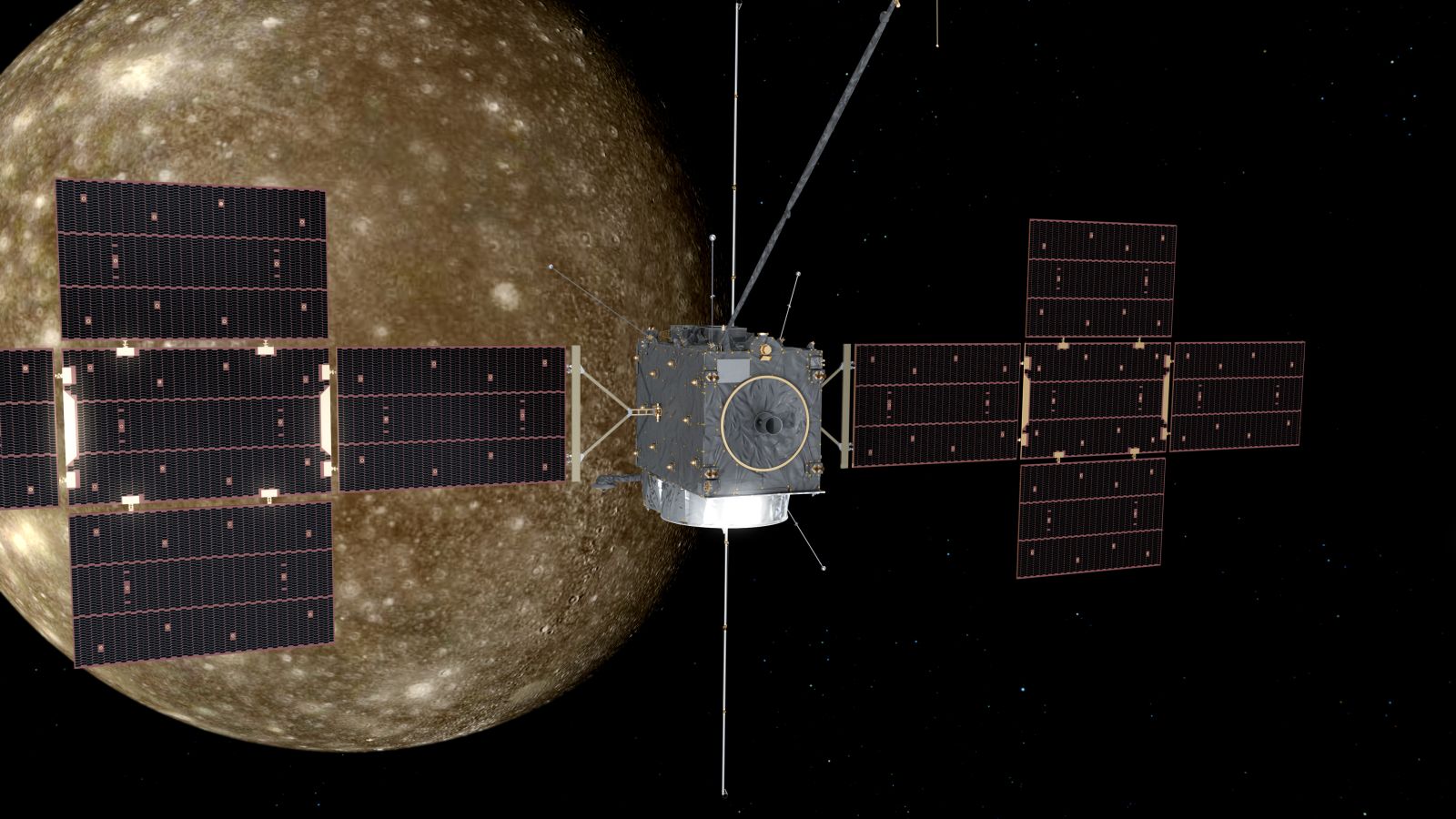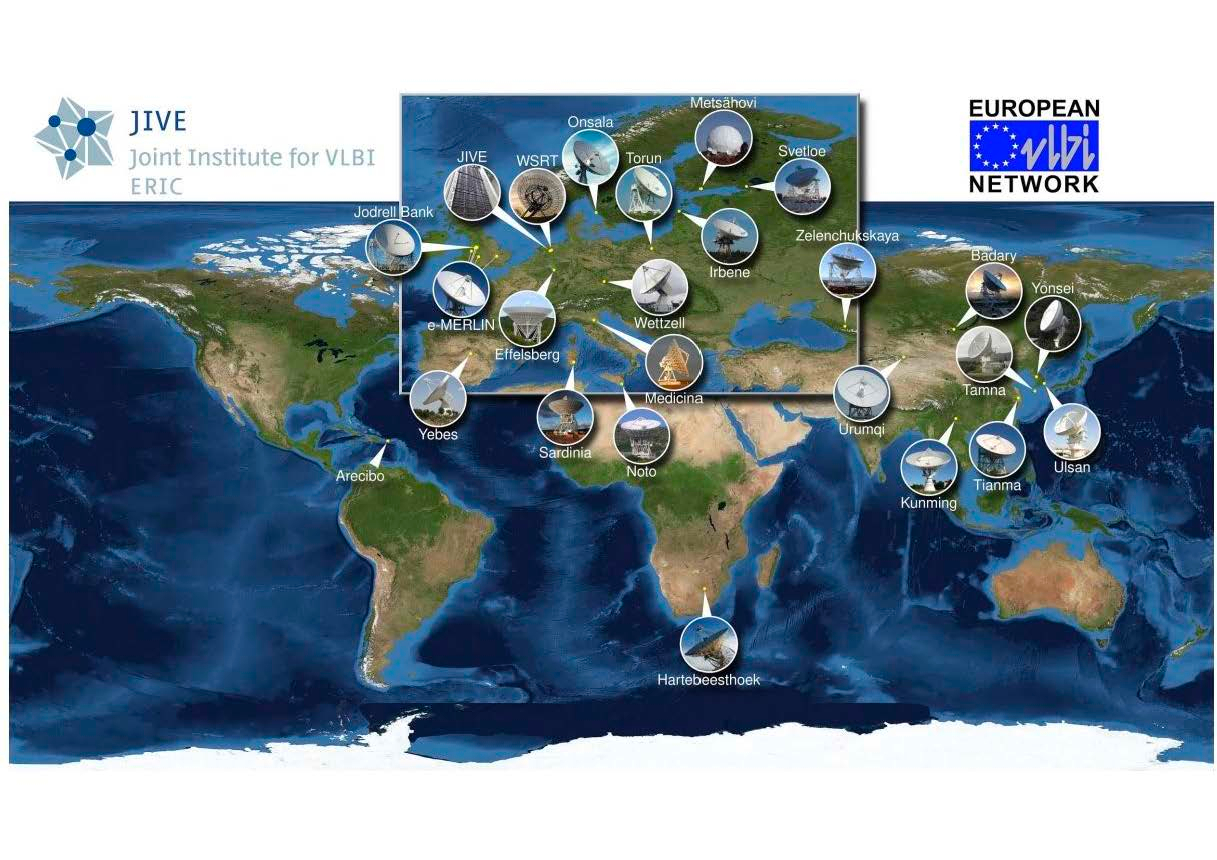Researchers at the HUN-REN Research Centre for Astronomy and Earth Sciences (HUN-REN CSFK) are part of the international PRIDE (Planetary Radio Interferometry and Doppler Experiment) team of the JUICE (Jupiter Icy Moons Explorer) mission. PRIDE enhances the science return of planetary missions like JUICE by exploiting existing spacecraft instrumentation and observing with Earth-based radio telescopes the radio signal transmitted by the spacecraft. A detailed review paper has recently been published in the prestigious journal Space Science Reviews.
JUICE is a major interplanetary space mission of the European Space Agency (ESA). The spacecraft was launched towards the largest gas giant planet of our Solar System, Jupiter, in April 2023. Since then, its near-Earth commissioning phase has ended successfully. The goal of the mission is to make detailed observations of Jupiter and its complex environment, especially three of its large Galilean moons, Europa, Ganymede, and Callisto. These planetary bodies are unique and interesting worlds in their own right, having, for example, liquid oceans beneath their icy crust.

Artist’s impression of JUICE flying by the Jovian moon Callisto. (Credit: ESA / ATG Medialab)
After its carefully choreographed eight-year cruise and four gravity-assist flybys at the inner planets Earth and Venus, JUICE will arrive at Jupiter in the summer of 2031. By entering orbit around the giant planet, it will perform a total of 35 close flybys at the three icy moons. Finally, at the end of 2034, the spacecraft will maneuvre itself to enter orbit around Ganymede, to study its surface, composition, and magnetosphere in even more details.
The JUICE spacecraft can be considered as a “Swiss army knife” of planetary exploration, having a diverse suite of remote sensing, geophysical, and in-situ instruments on board. These include cameras, spectrometers, radar sounder, laser altimeter, as well as instruments for studying the magnetic, radiation, and particle environment. JUICE was designed and built in broad international collaboration, including Hungarian research institutes and space industry.
On top of the ten instrument packages, a “bonus experiment” in the JUICE science programme is PRIDE, without requiring dedicated hardware on board. PRIDE itself is a multi-purpose experiment to enhance the science return of the mission. It employs observations of the radio signal transmitted by the spacecraft by multiple Earth-based radio telescopes using the technique of Very Long Baseline Interferometry (VLBI), to accurately determine the lateral position of the spacecraft in the celestial reference frame defined by distant radio-emitting active galactic nuclei, quasars. Another aspect of PRIDE is the evaluation of the Doppler shift of the signal to precisely measure the line-of-sight velocity of the spacecraft. The PRIDE measurements can be applied to a wide range of research fields including studies of atmospheres through the use of radio occultations, the improvement of planetary and satellite ephemerides, as well as gravity field parameters, geodetic, and interplanetary plasma properties.
Now, when JUICE is on its long way to Jupiter, the instrument teams start to publish detailed reviews of the scientific and technical background of their experiments in a topical collection of the prestigious journal Space Science Reviews. The series started with the recent publication by the PRIDE team which has astronomers from the Konkoly Observatory of the HUN-REN CSFK among its members. The task of the Hungarian group is to find and characterise compact extragalactic radio sources along the celestial track of the JUICE spacecraft, and to assist in planning and scheduling forthcoming VLBI observations. These radio sources should be suitable as reference objects for determining JUICE position with VLBI radio telescope networks. The expected accuracy of these measurements at the vast distance of Jupiter is breath-taking: comparable to that of satellite navigation receivers commonly used here on Earth in cars or smartphones!

Global distribution of radio telescopes participating in the European VLBI Network. (Credit: JIVE)
PRIDE observations of the JUICE spacecraft will not be restricted to the Jovian phase of the mission that starts in 2031 only. For example, at around the Venus flyby in August 2025, a global network of radio telescopes will aim at JUICE. This experiment will not just be a unique dress rehearsal opportunity for practicing the complex procedure from observational planning to data analysis. The VLBI data will also be applied for accurate independent validation of the ephemeris solution for Venus. An observing proposal to prepare for the JUICE Venus flyby in due time, led by the Hungarian group, has recently been accepted by the European VLBI Network (EVN). The goal is to look for yet unknown potential celestial reference radio sources, as close as possible to the spacecraft trajectory, to maximize the science return of PRIDE observations – already well before reaching Jupiter and its moons.
The work of the HUN-REN CSFK team was supported by the Hungarian Ministry of Foreign Affairs and Trade through a contribution to the ESA PRODEX programme (project PEA 4000136207).
Contact:
Sándor Frey (HUN-REN CSFK): public.btn.email
HUN-REN CSFK press officer Adrienn Ádám: public.btn.email
Publication:
Gurvits L.I. et al. (2023): Planetary Radio Interferometry and Doppler Experiment (PRIDE) of the JUICE Mission. Space Science Reviews, Vol. 219, id. 79